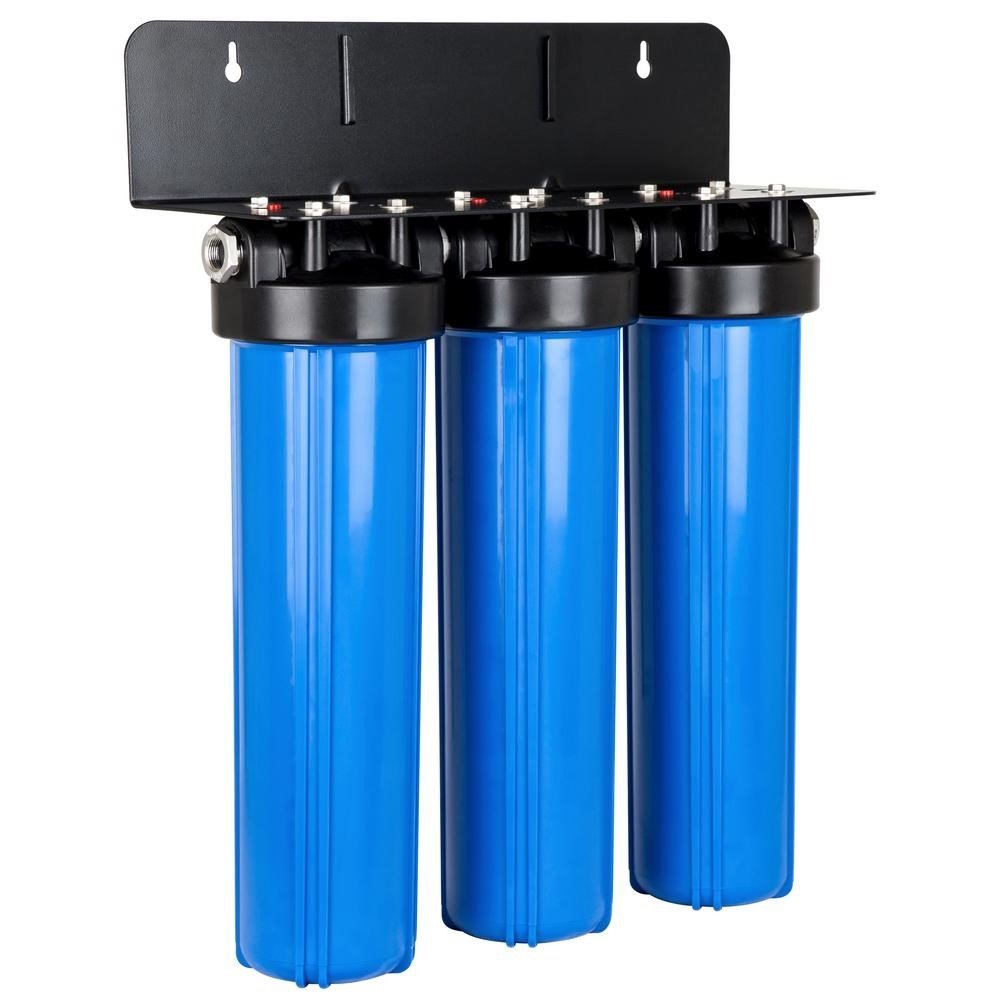Table of Contents Show
Does the water in your household have a weird smell or taste? This crystal clear liquid coming out from your taps isn’t necessarily pristine, as it often contains unhealthy compounds.

Before it even reaches your taps, there is a high likelihood for water to pass through dirt, harsh chemicals, rocks, hazardous microorganisms, etc.
Therefore, household water filters have become a must in the market. These relatively small investments have the potential to protect the health of families.
Choosing the right filter for your household requires a series of steps for homeowners to take. The following guide will assist you with the purchase.
Evaluate your Needs
The inceptive step towards choosing such a filter is evaluating your needs. Make sure you get familiar with POE and POU systems, both of which are available for home use.
The former treats all the water entering your household and connects to a storage tank under pressure. The latter treats it at the exact point of its consumption, like a sink or showerhead. These filters are either installed inline or attached externally.
Homeowners are also supposed to discover which contaminants affect their water quality. Such knowledge will help you determine whether you need to target particular contaminants.
There are many state-certified laboratories that provide low-cost or even free kits for water testing. There could be some visible particles, such as sediment and rust. Houses that use wells usually deal with bacteria. Learn more about eliminating rust sediment in house pipes.
Home tests are helpful in detecting the presence of lead, pesticides, chlorine, nitrates, and bacteria. They also reveal the hardness and PH of the water. If your source is a private well, tests should be performed twice annually.
The specific needs of every household will determine the need for POE or POU systems. If your family drinks a few gallons per day, a simple filter will be enough to meet your needs.
In case your filtering needs are only for the purpose of improving taste, you can address this requirement by installing a POU filter on your faucet.
Read Also:
Choose the Right Type
Once you discover the contaminants in your municipal supply, you should find the filter type that removes these ingredients.
There are various models to consider, including pitcher, faucet-mount, countertop, under the sink, shower, and whole-house filters. Pitcher filters are known to eliminate only several contaminants, like chlorine.
Additionally, the water is stored in plastic for longer time periods, which usually leads to picking up chemicals from the pitcher. While pitcher models are inexpensive, their main role is to improve water and taste odor while leaving out many contaminants.
In contrast, faucet-mounted models remove a fair amount of contaminants, which should be checked by reading the fine print. Visit this URL, https://www.technologynetworks.com/tn/lists/8-common-water-contaminants-and-how-to-prevent-them-296339, to have a look at the eight most common contaminants.
Furthermore, faucet-mounted filters aren’t too expensive and can be replaced without employing any special skills. Nevertheless, homeowners should consider the effectiveness of these devices, as they don’t last too long before a replacement is necessary.
Conversely, countertop models are space-efficient, as they take up no space under the sink. These devices can be either secured to your faucet or be freestanding.
The benefit of a hooked filter is that it doesn’t require constant refilling of the container. Free-standing models, on the other hand, are a smart investment because of their capacity to purify water in emergency situations when the power goes out.
In the event of a power outage, municipal supplies cannot maintain water pressure, which causes well pumps to cease working unless there is a backup source of energy.
Undersink filters are a logical solution when countertop space is not large enough. Just like the countertop models, undersink devices require no refilling. Reverse osmosis models are incredibly effective at eliminating contaminants.
On the negative side, they are expensive and waste plenty of water, three or more gallons for every gallon you receive. Since they use electricity, reverse osmosis devices won’t perform their job whenever the power goes out.
Whole-house filters are chosen by homeowners who wish to filter all the water running through their households to prevent contaminants like chlorine from ending up in the air when running unfiltered water.
There is a myriad of whole-house filtration systems, such as Aquaox, which are well-designed and highly efficient. If you are wondering how chlorine can wind up in the air, just think of the steam coming out of your dishwasher.
On the same note, steamy-hot showers also release chlorine, which you are likely to breathe in. Keep in mind that whole-house filters are costly compared to the other models. However, they are worth considering by any homeowner interested in reducing his exposure to chemicals.
Shower filters are another alternative for homeowners to consider, as shower water requires filtering as well. The chlorine suppliers use for disinfection remains in the liquid coming from the shower.
Consequently, when you turn the shower on, chlorine is released into the air. While having a shower, you are most likely to breathe in this contaminant or absorb it through your skin.
Furthermore, other compounds that may become airborne are chloroform and chloramines. Fortunately, shower filters remove a large portion of the chlorine.
Airborne compounds are speculated to affect the microbiomes living in our bodies and help us stay healthy. By eliminating chlorine, you will be protecting your health and making your hair and skin softer to the touch.
Consider Different Technologies
Homeowners looking for a home water filter should consider the different technologies used in the design of these devices. These technologies include activated carbon, ceramic, reverse osmosis, distillation, and UV light.
Each of these methods provides unique benefits and drawbacks, which must be taken into account. By discovering the exact water contaminants in your household, you will be able to choose the right technology.
The Bottom Line
Protect the health of your family by investing in a home water filter. It’s the least you can do to stay healthy!













